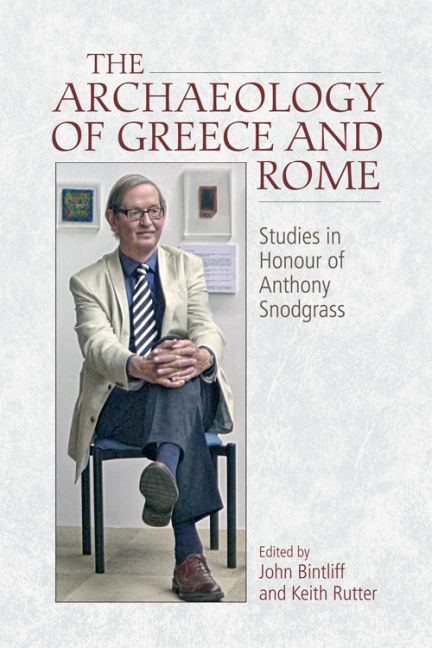Book contents
- Frontmatter
- Contents
- Preface
- List of Contributors
- List of Abbreviations
- Section I Prehistory
- 1 ‘The Coming of the Greeks’ and All That
- 2 Archaeology and the Archaeology of the Greek Language: On the Origin of the Greek Nouns in –εύς
- 3 Survey, Excavation and the Appearance of the Early Polis: A Reappraisal
- Section II Around Homer
- Section III The Archaic and Classical Greek World
- Section IV The Greeks and their Neighbours
- Section V The Roman and Much Wider World
- Section VI The Scholar in the University and in the Field: Personal Histories
- Index
3 - Survey, Excavation and the Appearance of the Early Polis: A Reappraisal
from Section I Prehistory
Published online by Cambridge University Press: 26 May 2017
- Frontmatter
- Contents
- Preface
- List of Contributors
- List of Abbreviations
- Section I Prehistory
- 1 ‘The Coming of the Greeks’ and All That
- 2 Archaeology and the Archaeology of the Greek Language: On the Origin of the Greek Nouns in –εύς
- 3 Survey, Excavation and the Appearance of the Early Polis: A Reappraisal
- Section II Around Homer
- Section III The Archaic and Classical Greek World
- Section IV The Greeks and their Neighbours
- Section V The Roman and Much Wider World
- Section VI The Scholar in the University and in the Field: Personal Histories
- Index
Summary
When writing a contribution to a Festschrift, the first thing to think of is of course a theme that relates to the honorand and her or his research. In the case of Anthony Snodgrass that is a surprisingly difficult task, because there are so many possibilities to choose from. As we all know, Anthony has produced seminal contributions to thinking about field survey, the Elgin marbles, Early Iron Age Greece, pottery styles, city planning, Archaic Greece, the origins of the polis, the (re-)birth of figurative art, demography, economy and many more subjects. To make things still harder for the Festschrift-writer, there is often not much to add to his interpretations and conclusions. It is therefore only with some hesitation that I here want to bring together and explore a set of Anthony's favourite hobby horses: the material side of the early development of the Greek city-state, as it can be seen from excavations of domestic sites and through field survey.
This is not an accidental choice: I came upon the subject when preparing my contribution to the publication of the results of the survey of the Boeotian city of Thespiae, on the pottery finds from the Early Iron Age to the Hellenistic period. As often in Greek surveys, the early historic period is not well represented among the finds, with a total of around 200 sherds. However, the thin spread of these Early Iron Age to Archaic sherds over the whole site (Fig. 3.1) is actually not a bad score compared with many other projects (Stissi 2011: 149–50). But what does it represent? It is quite conceivable that the continuing habitation of the city has reduced the amount of early material in the top layers. Nevertheless a city of the density and size of Classical and Hellenistic Thespiae seems unlikely for the period before that. Yet apparently there was some human activity over a large area of Thespiae from the eighth to the sixth centuries bc. How should we envisage that?
- Type
- Chapter
- Information
- The Archaeology of Greece and RomeStudies In Honour of Anthony Snodgrass, pp. 31 - 54Publisher: Edinburgh University PressPrint publication year: 2016

